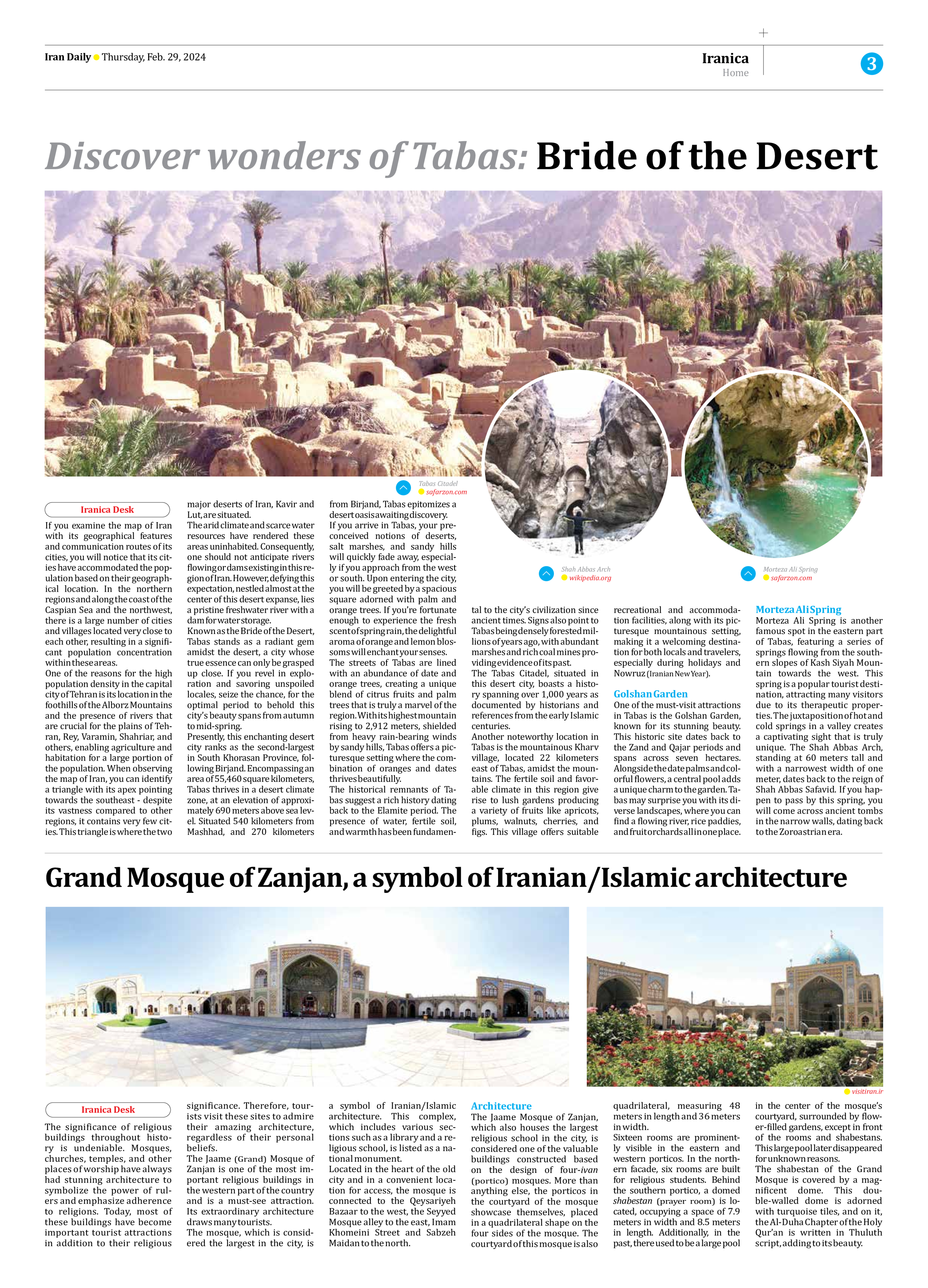
Grand Mosque of Zanjan, a symbol of Iranian/Islamic architecture
The significance of religious buildings throughout history is undeniable. Mosques, churches, temples, and other places of worship have always had stunning architecture to symbolize the power of rulers and emphasize adherence to religions. Today, most of these buildings have become important tourist attractions in addition to their religious significance. Therefore, tourists visit these sites to admire their amazing architecture, regardless of their personal beliefs.
The Jaame (Grand) Mosque of Zanjan is one of the most important religious buildings in the western part of the country and is a must-see attraction. Its extraordinary architecture draws many tourists.
The mosque, which is considered the largest in the city, is a symbol of Iranian/Islamic architecture. This complex, which includes various sections such as a library and a religious school, is listed as a national monument.
Located in the heart of the old city and in a convenient location for access, the mosque is connected to the Qeysariyeh Bazaar to the west, the Seyyed Mosque alley to the east, Imam Khomeini Street and Sabzeh Maidan to the north.
Architecture
The Jaame Mosque of Zanjan, which also houses the largest religious school in the city, is considered one of the valuable buildings constructed based on the design of four-ivan (portico) mosques. More than anything else, the porticos in the courtyard of the mosque showcase themselves, placed in a quadrilateral shape on the four sides of the mosque. The courtyard of this mosque is also quadrilateral, measuring 48 meters in length and 36 meters in width.
Sixteen rooms are prominently visible in the eastern and western porticos. In the northern facade, six rooms are built for religious students. Behind the southern portico, a domed shabestan (prayer room) is located, occupying a space of 7.9 meters in width and 8.5 meters in length. Additionally, in the past, there used to be a large pool in the center of the mosque’s courtyard, surrounded by flower-filled gardens, except in front of the rooms and shabestans. This large pool later disappeared for unknown reasons.
The shabestan of the Grand Mosque is covered by a magnificent dome. This double-walled dome is adorned with turquoise tiles, and on it, the Al-Duha Chapter of the Holy Qur’an is written in Thuluth script, adding to its beauty.







